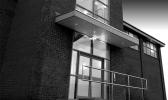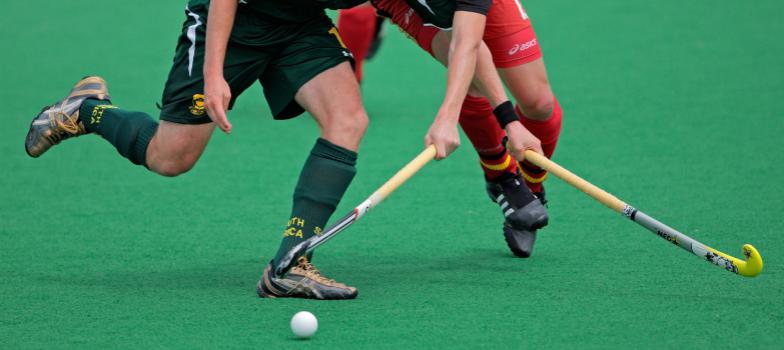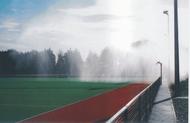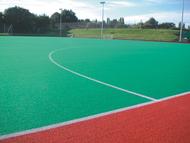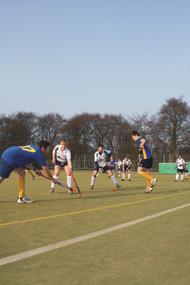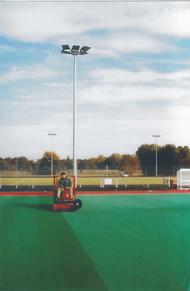The introduction of water-based surfaces to the world of hockey meant that the same playing conditions could be experienced across the globe. However to ensure this is the case it is essential that a comprehensive maintenance regime is implemented as early as possible to retain those exact playing characteristics. Whatever surface you play your hockey on - sand-filled, sand-dressed or water-based - ball roll is paramount and it is therefore critical that the correct maintenance techniques are used. These are dependent on the type of surface as each has its own inherent problems. Technical Surfaces presently service over a third of all national league team sites as well as many hundreds of other surfaces across the country. Jonathan Gunn, Technical Director, explains,
The problems encountered are wide ranging. Some are generic and common to all types of surface exposed to the elements with general dirt and debris being trafficked onto the pitch. Other instances can be quite unique and site-specific. Changes to pitch designs and carpet manufacture can represent a whole new set of problems and for that reason we are constantly carrying out research into new techniques and machinery. Climate too has had a large bearing with shifts in seasons and extremes in weather having a major impact on surfaces.
One recent example is the increase in the formation of algae on water-based surfaces, representing a hazard to players' general health as well as the obvious loss of traction. Trials of new algaecides have been carried out at a number of top sites, including Loughborough and Westminster Universities and Hounslow and Beeston Hockey Clubs to help combat the problem. Once the surface is treated, specialist machinery is used to remove the slime.
Water can be the catalyst for a build up of limescale on a surface. Although not immediately apparent, closer inspection of the carpet can display chalky deposits on the pile. This is more acute in hard water areas but if left unchecked can become quite pronounced. Once attached to the pile it is very hard to remove, similar to the build-up on a tap. Research into ways of altering the chemical makeup of the water to prevent limescale from forming are currently underway. This will also help reverse the effect and soften existing deposits helping them to be removed.
These two examples are very specialist and we are more commonly asked to attend to failed joints. This may either be a planned exercise of seam repair during the closed season or an emergency call 24 hours before the next game! In either case we do our utmost to help and currently operate a 48 hour call out service for our clients. With at least 15 dedicated maintenance vehicles on duty we are often able to attend on the same day we receive the call.
Whatever the age and condition of your pitch, a comprehensive maintenance programme is vital in order to retain or improve the playing characteristics and extend useful life. We would be happy to visit any site across the UK and carry out a full assessment and discuss ways of getting the most from your surface.

